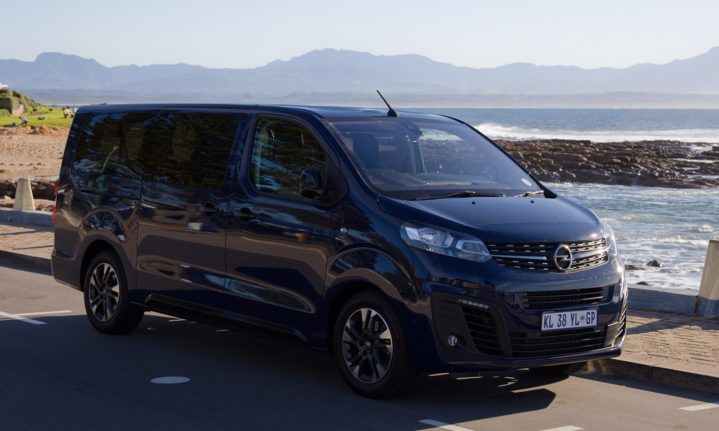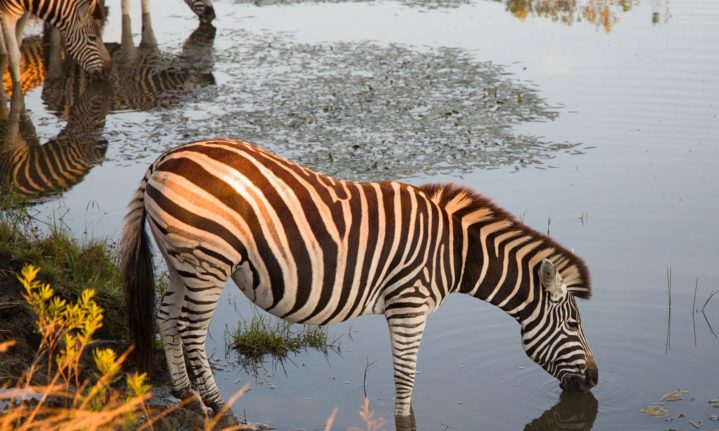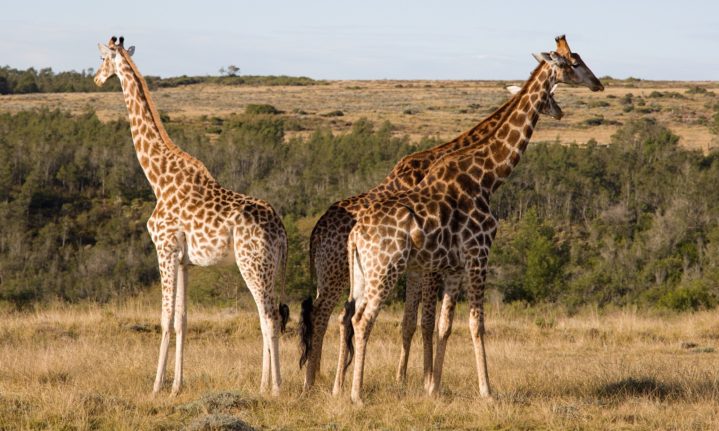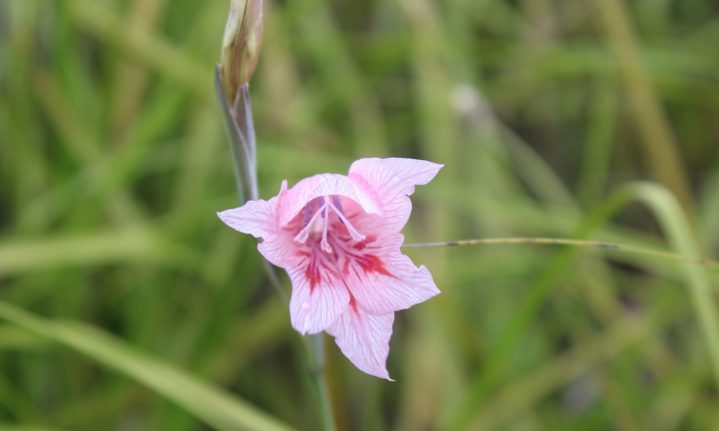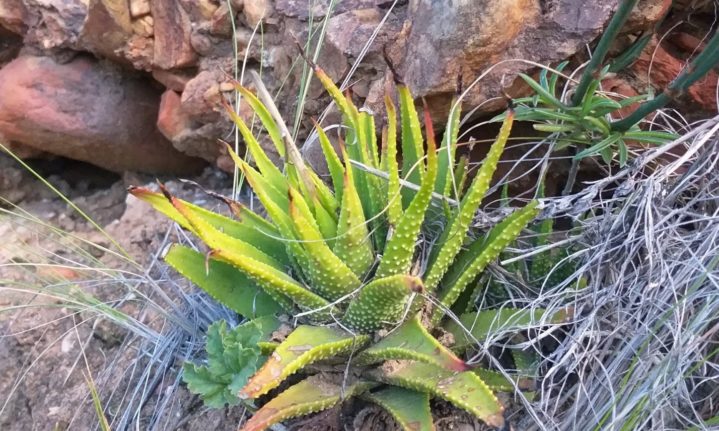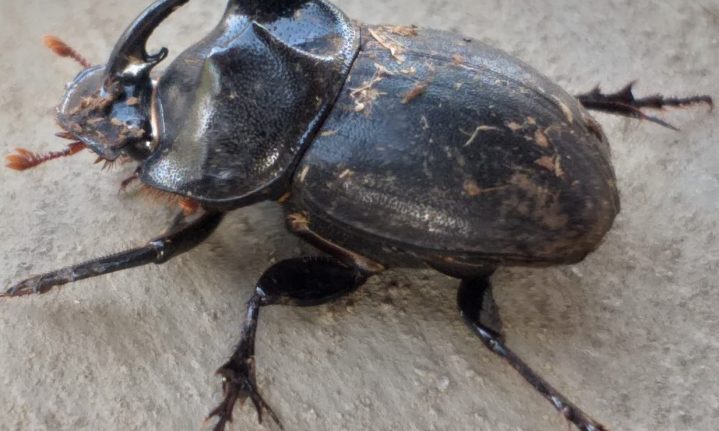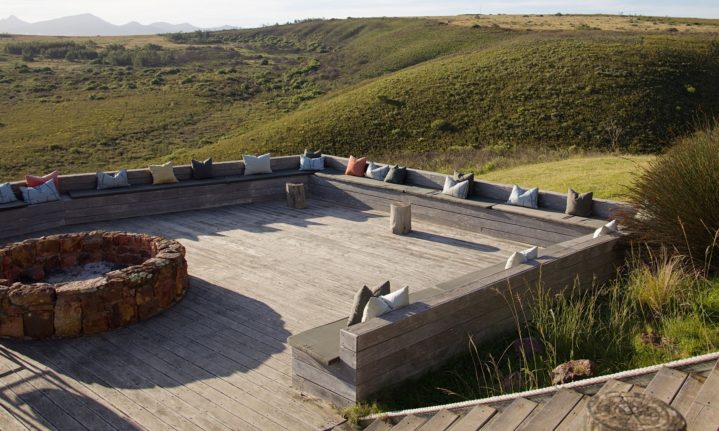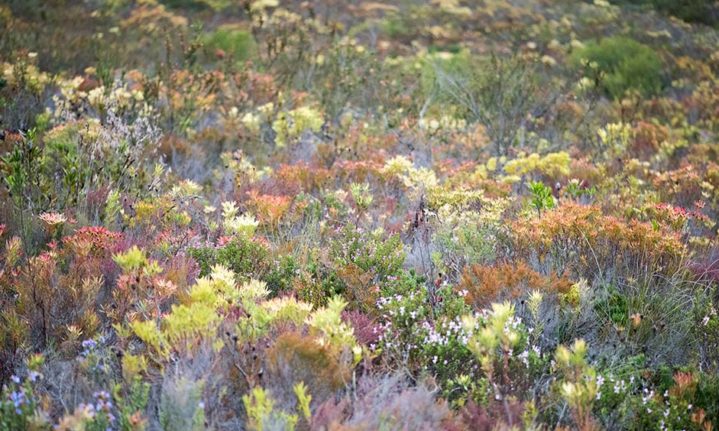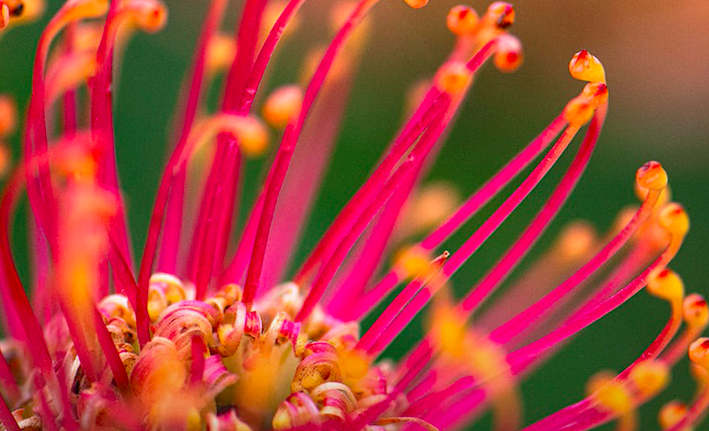‘The truth is, there are so many fynbos species that choosing a Big 5 is impossible.’
Christopher Jantjies, Pinnacle Point guide, has a special interest in fynbos. He is taking us down to the cave, where we learn about the beginning of human culture, but on the way down – there are about 200 steps (you have to climb up them on the way back!) – we stop often, to discuss the flora.
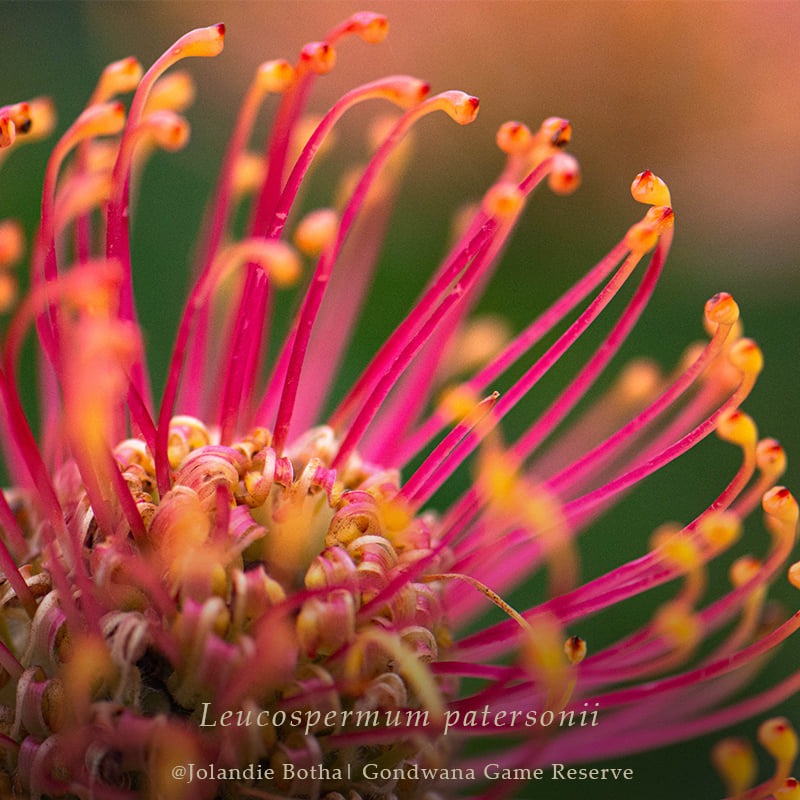
Leucospermum patersonii is part of the family Proteaceae. Photo: Jolandie Botha
‘But if I have to say, I would include, the proteas, the ericas and kooigoed (Helichrysum petiolare) – also called bedding plant and imphepho.’
READ: Seven UNESCO biosphere reserves in South Africa
I am in Mossel Bay, an expectedly lovely place to spend a weekend, on the way to Gondwana Private Reserve, to meet the reserve’s resident botanist, Kevin Koen.
The car
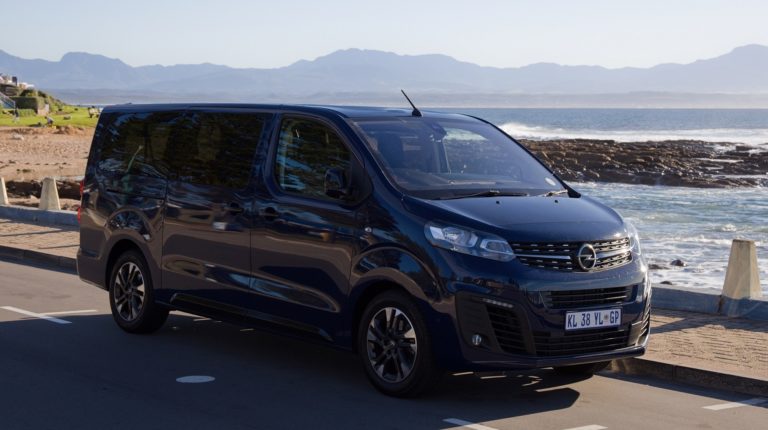
Opel Zafira Life in Mossel Bay. Photo: Matthew Kearney
The Opel Zafira Life has brought me here, four hours of smooth driving from Cape Town. Sitting up front is amazing, the huge windows giving a fantastic view of the passing (often breathtaking) landscape.
The circular gear dial is a bit odd to start with, but after the first run around town, you realise how clever it actually is.
Mossel Bay surfers look with envy at the size – the seven-seater, with plenty of luggage room too, could take you on an epic surf trip in search of the perfect wave.
Gondwana
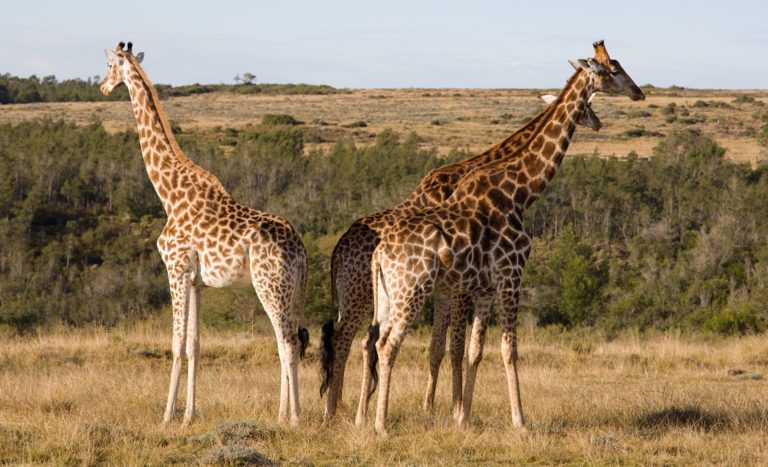
Giraffes at Gondwana Private Reserve. Photo: Matthew Kearney
Gondwana is a Big 5 reserve in the Western Cape – yes, lion and elephant, wildebeest and buffalo – in the fynbos. It is a strange sight, to see lion lounging around in these rolling green hills. But here they are, these bushveld animals, adapted to this unusual landscape, elephants treading on the plants and sending that unmistakable fragrance into the air.
Gondwana is a special place about half an hour inland from Mossel Bay. It’s an open natural system, and it’s not unusual to have lions roaming around the lodge, or a journey of giraffe happily feeding outside your villa.
It is set in 10,800ha, with a 74km-long perimeter fence; of this there is a 1,000ha protected species area, where guests can mountain bike or hike.
Calm and welcoming, the lodge is quietly decorated in a bushveld theme. There is a pool, but it is unheated and May is too cold for a swim. And a boma, of course, with indoor and outdoor dining. The lounge has several interesting wildlife books, and beautiful photographic studies.
My villa is large, perhaps too large – big enough for a game of touch rugby, possibly. It sleeps six, and is fully equipped for self-catering. Tea on the patio in the afternoon sun is a treat, the sounds of the wild singing in your ears.
The beautiful beehive rondavels – a contemporary interpretation of the traditional Khoi-San dwellings – at Kwena Lodge were being refurbished during my stay. But there are the Fynbos Villas, Bush Villas, Tented Camps and the super-luxury Ulubisi House, which comes with its own staff complement and sleeps either eight adults or six adults and four children.
Guided fynbos experience
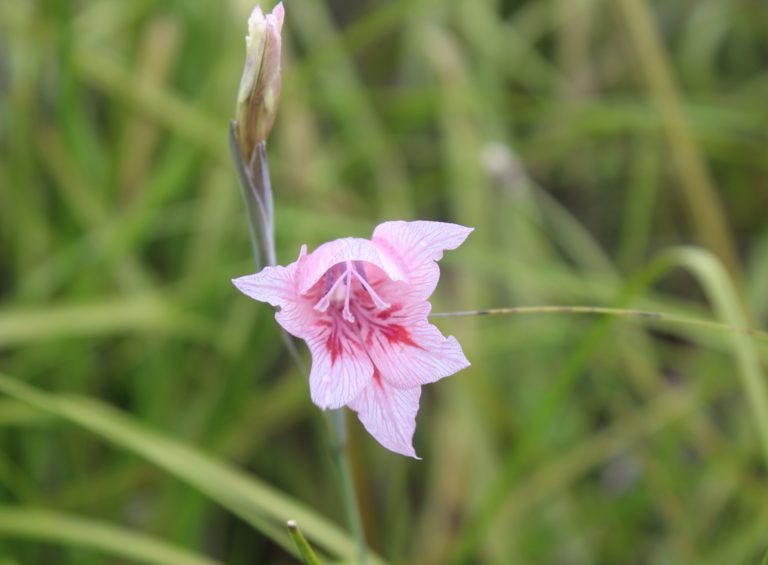
Gladiolus roseovenosus at Gondwana Private Reserve. Photo: Kevin Koen
We set out early in the morning, Kevin and I, on a guided fynbos walk. There are 1,172 documented plants species on the reserve, including typical fynbos, geophytes, trees and shrubs, succulents and even naturalised aliens.
‘We have more than 50 species with status on Gondwana, but Gladiolus roseovenosus is our only critically endangered species on the reserve,’ Kevin says.
The plant is endemic to a small area on the southern slopes of the Outeniqua Mountains, the extent of occurrence is less than 100km². There were four historical subpopulations, one of which was destroyed by afforestation; it no longer exists. The three remaining subpopulations are all very small and there are fewer than 200 plants in total. Alien plant invasion is destroying the plant’s habitat quality, reads the Sanbi Red List.
‘The vygies (Aizoaceae) are probably the rarest on the reserve: there are fewer than 50 plants of the Drosanthemum edwardsiae, and fewer than 30 Lampranthus coralliflorus.
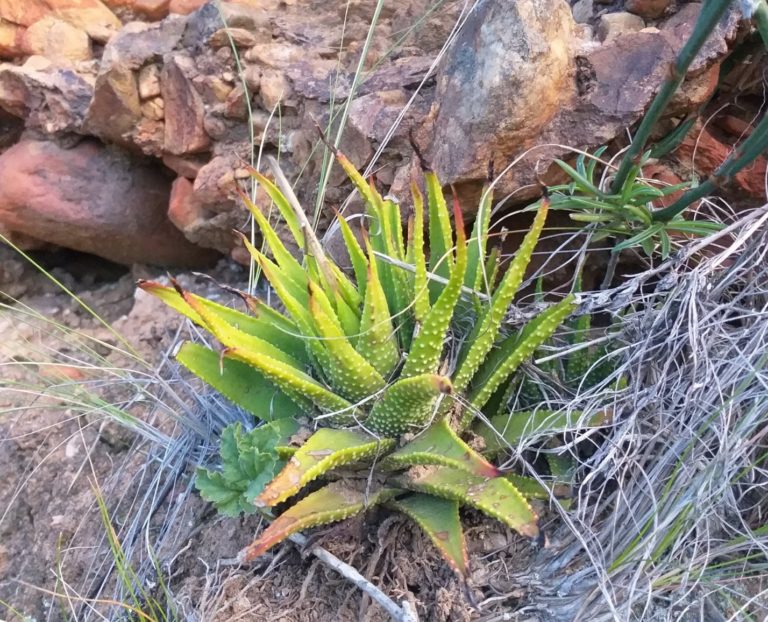
Tulista kingiana at Gondwana Private Reserve. Photo: Kevin Koen
The Big 5
Kevin pours cups of homemade honeybush tea; he harvests the honeybush himself and makes the tea using a traditional tried and trusted method.
‘For me, a generalised Fynbos Big 5 is: Protea, Serruria (spiderhead), Aspalathus (Aspalathus linearis is better known as rooibos), Muraltia (spiky purple gorse and tortoise berry) and Erica, but my favourite plant on Gondwana is Tulista kingiana (miniature aloe).’
There are more than 9 000 plant species in the fynbos vegetation types. Endemicity is very high – more than 80% of plant species are confined to the Cape Floral Kingdom and Fynbos Biome, iNaturalist tells me.
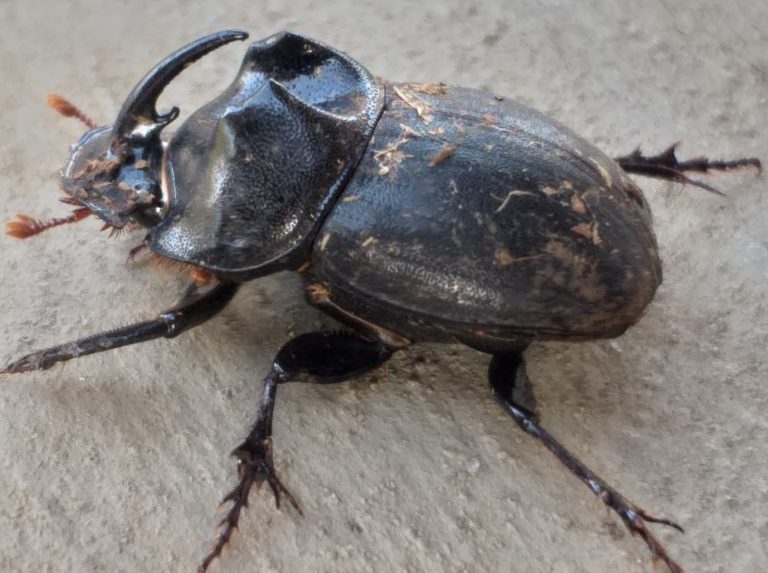
Copris fidius (rhino beetle) at Gondwana Private Reserve. Photo: Kevin Koen
The importance of insects
Insects, Kevin says, are critical to fynbos, many helping with pollination, or even protecting seeds underground. His Insect Big 5: Drepanogynis (a moth genus), shieldbugs, dung beetles, stick insects and mantids.
‘Long probocid moths like the Sphinx moths are attracted to sweet smelling flowers in the evening, for example Gladiolus emiliae. Their long proboscis can reach the nectar at the bottom of the floral tube. The anthers, which produce the pollen, touch the moth’s body, transferring pollen.’
When the moth visits another flower the pollen is transferred to it – successful pollination achieved.
Other insects critical to fynbos pollination include monkey beetles, long-tongued flies, bees, solitary bees, moths and butterflies.
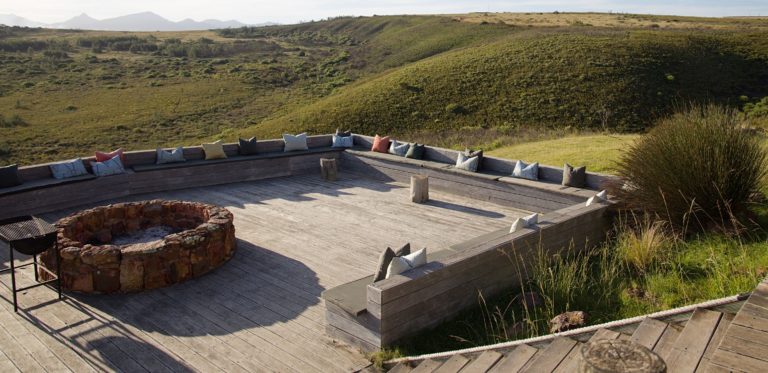
The Gondwana Private Reserve boma. Photo: Matthew Kearney
And then there is bird pollination; sugarbirds and sunbirds particularly ensure the pollination of proteas and Leucospermum, or pincushions. Wind pollination takes care of some ericas and Leucadendron (conebushes).
But insects are not only important for pollination, Kevin says. ‘There are quite a few species of fynbos that entice ants by producing a fatty layer on the seeds. This is known as myrmecochory. The ants carry the seeds underground, where they are protected until they are ready to germinate and grow – often after a fire.’
Among the plants that do this is Serurria fasciflora (common pin spiderhead), Agathosma (buchu) and Leucospermum.
Rates
Gondwana Private Game reserve offers full board or half board packages. There is a special rate currently for South Africans of R2 620 per person sharing per night half board, and R3 250 per person per night full board. Rates increase on 1 October 2022.
ALSO READ
6 Wilderness stays for seaside, lakeside & countryside living









